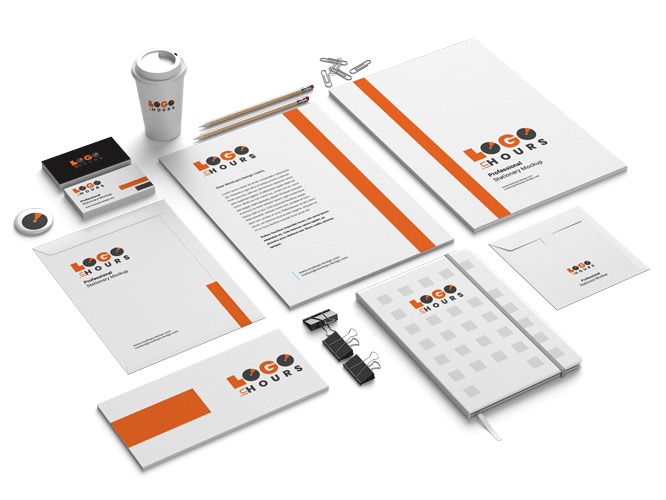Blog Information
- Posted By : Andrew Paul
- Posted On : Jul 25, 2024
- Views : 157
- Category : General
- Description : When it comes to logo design, every element matters, but one of the most impactful is the choice of font.
Overview

When it comes to logo design, every element matters, but one of the most impactful is the choice of font. The right font can elevate your brand, making it instantly recognizable and memorable. At Logo In Hours LLC, we understand the nuances of logo construction and how crucial it is to select the perfect typography. Whether you're searching for a graphic designer near me or looking for logo designers near me, this guide will help you understand how to choose the right fonts for your logo.1. Understanding Your Brand Personality
Before diving into fonts, it's essential to have a clear understanding of your brand's personality. Is your brand modern or traditional? Fun or serious? Luxury or budget-friendly? Your font should reflect the essence of your brand.
Example: Coca-Cola
Coca-Cola's logo uses a script font that exudes a classic and friendly feel, perfectly capturing the brand's long history and its aim to evoke nostalgia and happiness.
2. Font Categories: Serif, Sans Serif, Script, and Decorative
Fonts generally fall into four main categories: serif, sans serif, script, and decorative. Each category conveys a different message.
Serif Fonts
Serif fonts, like Times New Roman, have small lines or strokes at the ends of letters. They convey a sense of tradition, reliability, and professionalism.
Example: The New York Times
The New York Times logo uses a serif font, reflecting its long-standing history and authority in journalism.
Sans Serif Fonts
Sans serif fonts, such as Arial and Helvetica, lack the small strokes at the ends of letters. They are clean, modern, and straightforward.
Example: Google
Google's logo uses a sans serif font, emphasizing simplicity, modernity, and approachability.
Script Fonts
Script fonts mimic cursive handwriting and can range from elegant to playful.
Example: Instagram
Instagram's logo features a script font, conveying creativity and a personal touch, aligning with the platform's emphasis on visual storytelling and personal expression.
Decorative Fonts
Decorative fonts are unique and can add a lot of personality to a logo but should be used sparingly to avoid overwhelming the viewer.
Example: Disney
The Disney logo uses a decorative font that is whimsical and magical, perfectly reflecting the brand's focus on entertainment and imagination.
3. Legibility is Key
No matter how beautiful a font may be, if it's not legible, it's not effective. Your logo needs to be easily readable at various sizes and from different distances.
Example: FedEx
FedEx uses a clean, bold sans serif font that is highly legible on everything from their delivery trucks to their packaging. The hidden arrow within the logo also adds a clever touch, emphasizing speed and precision.
4. Pairing Fonts
Sometimes, a logo will require more than one font. Pairing fonts can add depth and interest, but it's important to ensure they complement each other and maintain balance.
Example: Canva
Canva's logo pairs a simple sans serif font with a script font, combining modernity with creativity, perfectly aligning with their brand as a user-friendly design tool.
5. Avoid Trends
While it might be tempting to choose a trendy font, trends come and go. Your logo needs to stand the test of time.
Example: Nike
Nike's logo, with its bold, timeless sans serif font, remains relevant and impactful decades after it was created.
6. Reflecting Your Industry
Certain industries tend to gravitate towards specific font styles. Understanding these tendencies can help you choose a font that aligns with your industry standards while still standing out.
Example: Law Firms
Many law firms use serif fonts to convey a sense of tradition, authority, and trustworthiness. The logo for Baker McKenzie, for instance, uses a serif font that reflects these qualities.
Example: Tech Companies
Tech companies often opt for sans serif fonts to reflect innovation and modernity. Apple's use of a clean sans serif font in its logo underscores its focus on sleek, cutting-edge technology.
7. Custom Fonts
For a truly unique look, consider a custom font. Custom fonts can set your brand apart and ensure that your logo is one-of-a-kind.
Example: Coca-Cola
Coca-Cola's logo features a custom script font that has become iconic and instantly recognizable worldwide.
8. Test Your Fonts
Once you've chosen a font (or fonts), test them in different contexts. Look at how they appear on different devices, in various sizes, and in both black and white and color versions.
Example: Airbnb
Airbnb's logo was carefully tested to ensure it worked well across various platforms and sizes, maintaining legibility and recognition.
9. Seek Professional Help
Choosing the right font for your logo is a critical decision that can significantly impact your brand's success. If you're unsure where to start, seeking professional help can be a wise investment.
At Logo In Hours LLC, our expert team of logo designers near me and graphic designers near me can guide you through the process. We specialize in logo construction and company logo design near me, ensuring that your logo not only looks great but also resonates with your target audience.
Conclusion
Choosing the right font for your logo is an art and a science. It involves understanding your brand's personality, considering different font categories, ensuring legibility, and sometimes seeking professional assistance. By following these guidelines and learning from successful examples like Coca-Cola, Google, and Nike, you can create a logo that stands out and effectively communicates your brand's essence.
